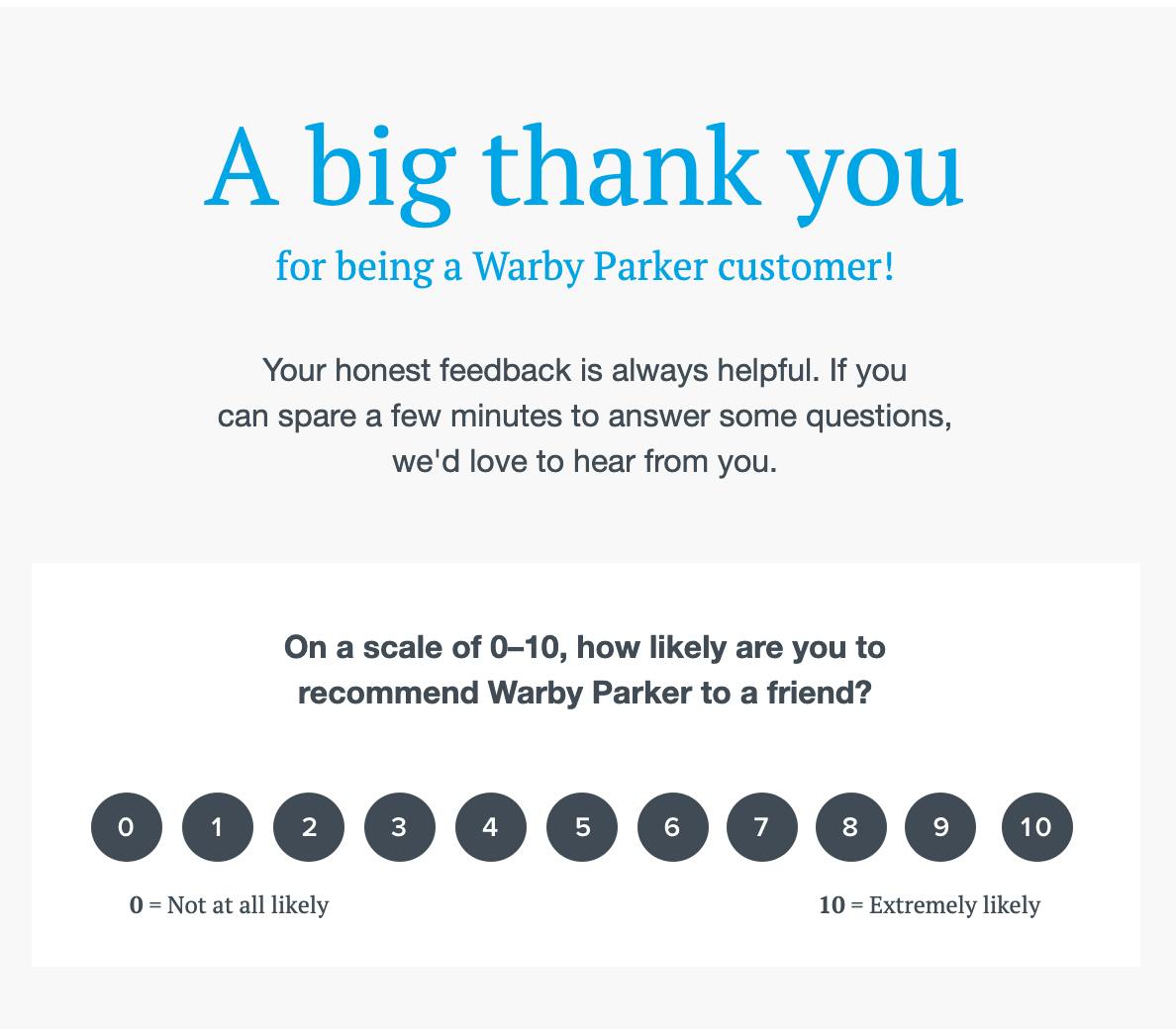What is NPS?
NPS (Net Promoter Score) is a metric that measures the likelihood a customer would recommend your brand to a friend. You use to gauge the overall quality of your customer experience and understand how customers feel about your business.
It’s a common practice for businesses to survey their customers via email after making a purchase. For example, say you recently purchased a pair of socks online from Happy Socks. In the confirmation email for that purchase, they ask you, “On a scale of 0–10, how likely are you to recommend Happy Socks to a friend?” Your answer helps Happy Socks calculate their NPS, giving them an idea of your overall experience with their brand.

Source: an email from Warby Parker used to gauge their Net Promoter Score(NPS).
What does NPS stand for?
NPS stands for Net Promoter Score and it’s a way of measuring customer satisfaction. It’s a metric that measures the likelihood a customer would recommend your product or service to a friend.
How is NPS calculated?
NPS is typically calculated by asking your customers, "How likely are you to recommend us to a friend or colleague?" and score the answers on a 0 to 10 scale. Once you’ve collected the responses, you tally the answers into the following categories:
- Detractors: Those with a score between 0 - 6
- Passives: Those with a score between 7 - 8
- Promoters: Those with a score of 9 -10
To calculate your NPS, you simply subtract the percentage of the detractors from the percentage of the promoters (passives aren’t used for NPS). The answer is your NPS.
Total % Promoters – Total % Detractors = Net Promoter Score (NPS)
For example, if you have 30% of respondents who are detractors and 70% who are promoters, your NPS would be:
70 - 30 = 40
Your NPS can range between -100 and 100. In an ideal world, you want your NPS to be as close to 100 as possible.
What is a good NPS score?
The creators of the NPS score, Bain & Company, say that a good NPS score is anything above 0. However, our recommendation would be to strive to be above 50.
Remember, NPS is simply an indicator of your overall customer experience. So, the higher your score is means your customers are generally pleased with your products and services — and the opposite goes for a low score. One way you can improve your NPS is to reach out to passives and detractors to ask them about their experience and how you can improve your brand, product, or service.
It’s also useful to benchmark your score against others in your industry, just to see how you stack up compared to your competitors.
What are the 3 categories of NPS?
The three categories of NPS are:
- Detractors: These are customers with a score between 0 - 6, which means they are unlikely to recommend your brand, product, or service to their friends.
- Passives: These are customers with a score between 7 - 8, which means they are somewhat likely to recommend your brand, product, or service to their friends.
- Promoters: These are customers with a score of 9 -10, which means they are highly likely to recommend your brand, product, or service to their friends.
Why is NPS important?
NPS has become a cornerstone metric for businesses of all sizes to understand the effectiveness of their brand or product through customers’ eyes. Even at Buffer, we regularly keep track of our NPS score to ensure that our customers are happy with our product, our marketing, and their overall experience with our brand.
Keeping score of your NPS number can also help you identify areas where improvements can be made. At Buffer, we give our customers the option to add a written feedback to their NPS score. This addition has proven to be immensely valuable to our team because we can spot areas of improvement for our product, customer experience, and marketing campaigns.


